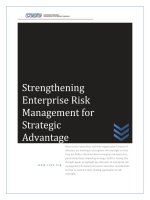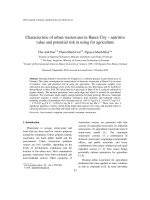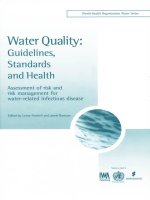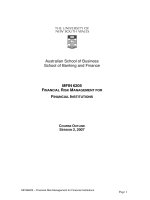Final ACS Risk Stratification Management for 12th VN
Bạn đang xem bản rút gọn của tài liệu. Xem và tải ngay bản đầy đủ của tài liệu tại đây (2.52 MB, 29 trang )
Acute Coronary Syndromes
Risk Stratification & Management
Matching Treatment to Risk
Khôi M. Lê, MD
Desert Cardiology Center
Eisenhower Medical Center
Rancho Mirage, California
USA
1
Hospitalizations in the U.S. due to
ACS
Acute Coronary
Syndromes*
1.57 Million Hospital Admissions - ACS
UA/NSTEMI†
STEMI
1.24 million
0.33 million
Admissions per year
Admissions per year
*Primary and secondary diagnoses. †About 0.57 million NSTEMI and 0.67 million UA.
Heart Disease and Stroke Statistics – 2007 Update. Circulation 2007; 115:69–171.
2
Age- and Sex-Adjusted Incidence Rates of Acute
Myocardial Infarction, 1999 to 2008
•Yeh RW et al. N Engl J Med 2010;362:2155-2165
Adjusted Odds Ratio for 30-Day Mortality, According to Year
•Yeh RW et al. N Engl J Med 2010;362:2155-2165
Standard treatment for ACS
Beta-blocker
Antianginal drugs Nitroglycerin
Diltiazem
Lipid-lowering drugs Statins
Aspirin
Antiplatelet drugs Clopidogrel
Prasugrel
Heparin
Enoxaparin
Antithrombotic drugs
Fondaparinux
Bivalirudin
Invasive management Angiogram ± revascularization
5
Risk Stratification
• Clinical factors
– Age, history of coronary disease, LV function, diabetes
mellitus
– Prolonged/recurrent resting CP or CP with dyspnea
– Presence or absence of heart failure, hypotension,
tachycardia, cardiac arrest
• ECG
– ST segment shifts
– T wave changes
• Laboratory data
– Cardiac markers/enzymes
– Serum creatinine
TIMI risk score
Points
Age ≥ 65 years
1
≥ 3 CAD risk factors
1
Prior CAD stenosis ≥ 50%
1
≥ 2 anginal events within last 24 h
1
ASA use during 7 days prior to hosp
1
Elevated cardiac markers
1
ST segment change ≥ 0.05 mV
1
High risk: Total ≥ 5
7
30-day and 1-year endpoint rates by risk group for the TIMI score
de Araújo Gonçalves P et al. Eur Heart J 2005;26:865-872
PURSUIT risk score
Points
Age
0-14
Male
1
CCS-class in previous 6 weeks
0-2
Heart failure
2
ST-segment depression
1
High risk: Total ≥ 14
9
30-day and 1-year endpoint rates by risk group for the PURSUIT score
de Araújo Gonçalves P et al. Eur Heart J 2005;26:865-872
Global Registry of Acute Coronary Events
(GRACE) risk score
Points
Age
0-91
Heart rate
0-46
Systolic BP
0-63
Creatinine
2-31
Killip class
0-64
Cardiac arrest at admission
43
Elevated cardiac markers
15
ST-segment deviation
30
High risk: Total ≥ 140
Eagle KA, et al.
11
JAMA 2004;291:2727-33 11
Admission Risk Calculator
www.outcomes.org/grace
Discharge Risk Calculator
www.outcomes.org/grace
30-day and 1-year endpoint rates by risk group for the GRACE score
de Araújo Gonçalves P et al. Eur Heart J 2005;26:865-872
In-hospital and 1 year outcomes
Physicians’
assessment
PURSUIT
TIMI
GRACE
15
•Yan A T et al. Eur Heart J 2007;28:1072-1078
GRACE and PURSUIT superior to TIMI
Receiver-operating characteristic curves for predicting in-hospital and 1-year mortality
In-hospital mortality
•Yan A T et al. Eur Heart J 2007;28:1072-1078
1-year mortality
Why are GRACE and PURSUIT
superior?
• Age as a continuous variable
– Only included as a categorical variable in TIMI
• Heart failure on admission
– Not in TIMI
• Baseline serum creatinine (only in GRACE)
17
Admission risk score correlates with
benefit from revascularization
de Araújo Gonçalves P et al.
Eur Heart J 2005;26:865-872
Meta-analysis of FRISC-II, ICTUS, RITA-3
Routine versus selective invasive in ACS
Risk of CV Death or MI
Fox, K. A. A. et al. J Am Coll Cardiol 2010;55:2435-2445
Meta-analysis of FRISC-II, ICTUS, RITA-3
Routine versus selective invasive in ACS
•Sustained advantage of routine invasive approach
•Degree of benefit corresponds to clinical risk
Fox, K. A. A. et al. J Am Coll Cardiol 2010;55:2435-2445
•Copyright ©2010 American College of Cardiology Foundation. Restrictions may apply.
Early versus Delayed Invasive Intervention in Acute
Coronary Syndromes
The TIMACS Study
• 3031 patients with ACS
randomized to early
(median 14 h) or delayed
(median 50 h) angiography
• Primary outcome: Death,
MI, stroke at 6 mos
• Secondary outcomes:
Death, MI, refractory
ischemia
Mehta SR et al. N Engl J Med 2009;360:2165-2175
21
TIMACS: High-risk patients benefit from early
intervention
Kaplan-Meier Cumulative Risk of the Primary Outcome, Stratified
According to GRACE Risk Score at Baseline
Mehta SR et al. N Engl J Med 2009;360:2165-2175
Major bleeding and 30 day mortality
34 146 ACS patients from OASIS, OASIS-2, CURE
5-fold ↑
mortality
23
Eikelboom, J. W. et al. Circulation 2006;114:774-782
CRUSADE: Multivariable Predictors of Bleeding
2
Variable
Derivation Cohort
OR
95% CI
Validation Cohort
OR
95% CI
Baseline HCT <36% (vs. ≥ 36%)
434.6
2.28
2.11-2.46
2.17
1.92-2.44
CrCl (per 10 mL/min decrease)
433.2
1.12
1.10-1.13
1.11
1.09-1.13
Heart rate (per 10 bpm increase)
159.2
1.08
1.07-1.10
1.09
1.07-1.12
Female
77.8
1.31
1.23-1.39
1.33
1.19-1.50
Signs of heart failure
37.7
1.23
1.15-1.31
1.13
1.01-1.28
Prior vascular disease
30.4
1.19
1.12-1.27
1.10
0.98-1.24
Diabetes mellitus
26.6
1.16
1.10-1.23
1.25
1.12-1.40
SBP ≤ 110 mm Hg (vs. 110-180)
12.6
1.26
1.16-1.36
1.27
1.10-1.47
1.24
1.14-1.35
1.18
1.02-1.37
SBP ≥ 180 mm Hg (vs. 110-180)
c-Statistic
0.72
Prior vascular disease defined as h/o stroke or peripheral arterial disease
Heart rate is truncated @ <70 bpm
CrCl: Cockcroft-Gault is truncated @ >90 mL/min
0.71
www.crusadebleedingscore.org









